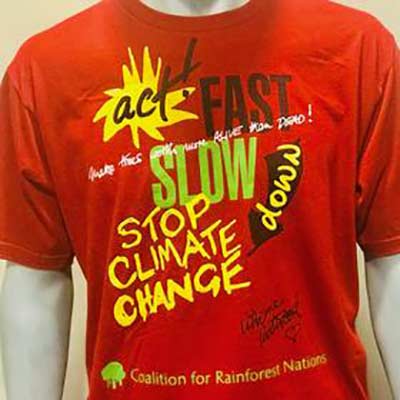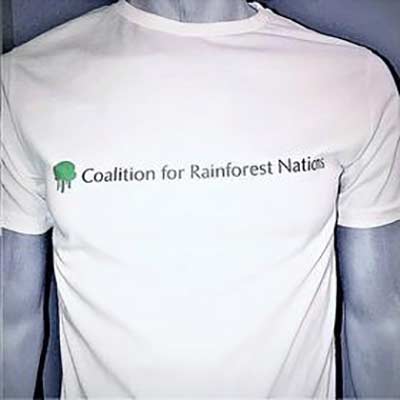Help Save Rainforests & Endangered Species
Impact
Impact
The UNFCCC REDD+ framework has reduced 14.4 billion tons of carbon emissions and counting
Multilateral Climate Treaties
The Coalition for Rainforest Nations (CfRN) offers you the best return on your philanthropic dollar. Since 2004, CfRN has been helping developing countries take a leadership role in tackling the climate emergency by slowing deforestation and reducing greenhouse gas emissions and increasing carbon removals.
We created the only globally agreed upon system that can equitably stop and reverse global deforestation by 2030. The [1] Reducing Emissions from Deforestation and Degradation (REDD+) framework was originated by our founders and introduced to the UN by Papua New Guinea and Costa Rica in 2004.
For the first decade, CfRN worked tirelessly with developing countries to guarantee the inclusion of rainforests within the global climate agreement, called the Paris Agreement (2015-today). Under the previous climate treaty, the Kyoto Protocol (2005-2015), rainforests were not recognized as a climate solution, and as a result rainforest nations did not have a seat at the table in global climate negotiations. So, CfRN focused on helping countries negotiate a framework for slowing deforestation into the Paris Agreement.
___________________________________________
[1] The purpose of REDD+ was to support national efforts to slow, stop, and reverse tropical deforestation under UNFCCC. While the term REDD+ is enshrined in Article 5.2 of the Paris Agreement, it was never patented by UNFCCC. That means that any voluntary forestry carbon project can use the name REDD+ without any methodological or legal connection to the Paris Agreement and UNFCCC or any legal recourse which creates confusion.
CfRN Timeline
In 2015, CfRN and its countries succeeded at the climate summit in Paris, and REDD+ was included in Article 5.2 of the treaty. The framework was approved by over 190 countries.
Rainforest nations are slowing deforestation based on goodwill and with little financial support. Join our movement.
CfRN has helped 13 countries slow deforestation since 2004.
Marciano Dasai, Minister of Environment and Spatial Planning for Suriname talking about CfRN’s support
Slowing Deforestation and Reductions Emissions at Scale
Over the next twenty years, we supported our countries within the UNFCCC to develop REDD+ into a fully operational system, verified by UN independent reviewers. In 2015, it was enshrined in the Paris Agreement. Today, we continue to support our countries in the negotiations to receive climate finance for their conservation efforts through the new UN crediting mechanism (Article 6).
In principle, UNFCCC REDD+ allows developing countries to receive reward-based payments through Article 5.2 for national efforts to slow, stop, and reverse deforestation. However, since 2005, developing countries have only received finance for 4% of the 13 billion tons of CO2 emissions that they have reduced.
65 rainforest nations countries are involved and working within UNFCCC REDD+ that we created. The framework now covers 95% of the world’s tropical forests and has reduced 14.4 billion tons of emissions and counting in 2024. Also, through our technical training work, we have helped 13 countries slow deforestation since 2004, including Papua New Guinea, Belize, Honduras, Suriname and others.

Future Impact
Today, CfRN is helping countries access climate finance and working to scale the number of countries attempting to reverse deforestation, provide transparency, and integrate their efforts into their climate pledges or Nationally Determined Contributions (NDCs) under the Paris Agreement. For the next five years, our goal is to help another 25 developing countries to accelerate and scale their ambition to halt and reverse global deforestation by 2030 and deliver net carbon removals of 1 billion metric tonnes per year.
.
Rainforest nations are slowing deforestation based on goodwill and with little financial support. Join our movement.
For the next five years, our goal is to help another 25 developing countries to accelerate and scale their ambition to halt and reverse global deforestation by 2030 and deliver net carbon removals of 1 billion tons per year.
“The world has learned its lessons from the effectiveness of compliance carbon standards. We must set a high bar for quality, oversight, and transparency, if Article 6 carbon markets are to deliver on 1.5 degrees.”
Kevin Conrad, Executive Director, CfRN
Case Study: Success for Rainforests at COP28, Dubai
In December 2023, the European Union, CfRN, and allies successfully negotiated the need to reverse deforestation by 2030 into the UAE Consensus Agreement, paragraph 33:
…the importance of conserving, protecting, and restoring nature and ecosystems towards achieving the Paris Agreement temperature goal, including through enhanced efforts towards halting and reversing deforestation and forest degradation by 2030.
CfRN followed up on this milestone by negotiating for the full implementation of Article 5.2 on forests (UNFCCC REDD+) using Article 6 (UN carbon markets) as the tool to provide climate finance to sovereign nations for conserving rainforests. The final UAE Consensus Agreement text, paragraph 34, reads:
… the need for enhanced support and investment, including through financial resources, technology transfer and capacity-building, for efforts towards halting and reversing deforestation and forest degradation by 2030 in the context of sustainable development and poverty eradication, in accordance with Article 5 of the Paris Agreement, including through results-based payments for policy approaches and positive incentives for activities relating to reducing emissions from deforestation and forest degradation, and the role of conservation, sustainable management of forests and enhancement of forest carbon stocks in developing countries.


